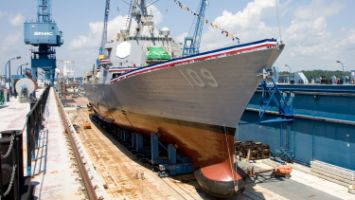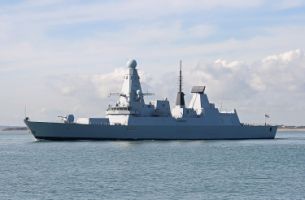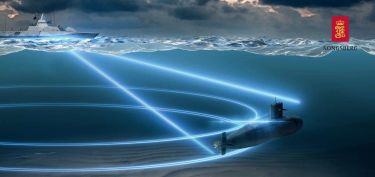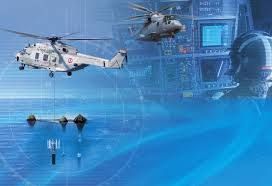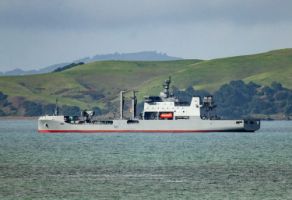Modernisation Of Estonia’s Mine Countermeasures Force in the UK Strengthens a 100-Year Tradition

05/14/2019. Huge ferries criss-cross the Baltic Sea and fishermen work its waters but beneath today’s peaceful waters lies the discarded legacy of two world wars and a cold one.
It’s been estimated that 165,000 were laid during the Twentieth Century in these hotly contested waters, with more explosive ordnance dumped at sea after each world war. The mines were either contact or remotely triggered (magnetic), tethered to the sea bed and relatively easy to sweep and destroy using conventional methods. However, the ordnance that remains now sits on the seabed, waiting to be hauled up in fishing nets or washed onto the shore by tidal action.
A concerted international effort has cleared more than 1000 plus mines since 1995. One of the most densely mined areas are off the coast of Estonia’s capital city, Tallinn on the approaches to what was the besieged city of Leningrad and the Estonian Navy (Eesti Merevägi) is dedicated to this task and has a flotilla of three specialist mine countermeasures (MCM) vessels. The ships, EML Admiral Cowan, Sakala and Ugandi are former Sandown-class single role minehunters bought from the Royal Navy a decade ago.
Refurbishment
The original Thales 2093 variable depth sonar is being replaced with a Thales 2193 hull mounted sonar which is better suited to the shallow waters of the Baltic where the associated issues of building a seabed visualisation beneath the sea’s bathymetric layers are not required.
For this reason all three ships are undergoing a thorough modernisation refit at Babcock’s facilities in Rosyth, Scotland, including replacing the existing sonar fit with a hull-mounted array and a complete operations room refurbishment.
The prime contractor for the work, and partner of Babcock, is Thales which is supplying its 2193 hull-mounted sonar. Thales’s UK-based Maritime Mission Systems business has a long established reputation designing and building sonar for the Royal Navy and other customers worldwide but this contract, which was won in the teeth of fierce international competition, also features another Thales product.
As part of the operations room upgrade, each ship will be fitted with Thales’s M-Cube combat mission. Unlike their legacy C2 system, M-Cube is based upon an open software architecture which allows quick insertion of new capabilities by “third parties”. This makes the system more flexible in interfacing with new technologies, including maritime autonomy, in which Thales is a leading player.
Thales’s refit project manager Dave Ernill said: “The sensitivity of Sonar 2193 coupled with the latest C2 system (M-Cube) means the ships will be able to map out routes and run mine hunting operations in both manual and autopilot mode. This gives the Estonian the enhanced capability they’re looking for.”
Thales recently won the contract to upgrade the Royal navy’s mine hunting flotilla with M-Cube as part of its Oceanographic Reconnaissance Combat Architecture (ORCA) programme, opening the door for closer cooperation between the UK and Estonia in mine countermeasures operations.
Engineering challenge
The ships’ variable depth sonar body along with its four-tonne winch system is being removed and the aperture in the GRP hull designed to house the old variable depth sonar is being repurposed to fit the new sensor array.
Stephen Rowe is the Mine Countermeasures Sector Director for MMS: “Recognising that the ships were originally designed around the installation of a variable depth sonar solution, the engineering required to replace it with a hull mounted sonar has presented some significant challenges, not least from a physical operating space perspective, but also to design an retro-installation that can withstand the stress and shock that a mine countermeasures vessel are required to withstand.”
A non-ferrous keel ring several metres across was designed and built to extremely low tolerances to fit around the aperture onto which a new sonar dome housing will be fitted. It must be able to withstand water pressure not only from tidal action but underwater detonations.
New opportunities for Thales
Winning the contract will open up new possibilities for Thales. Stephen said: “The delivery as prime contractor, of the reactivation the Estonian Navy’s mine warfare vessels is a significant achievement which offers the Estonian Navy a proven and sustainable mine warfare capability. This important contract demonstrates Thales’ ability to successfully deliver complex warfare modernisation programmes.”
He continued: “The delivery as prime contractor, of the reactivation the Estonian Navy’s EN Admiral Cowan and EN Sakala mine warfare vessels, is a significant achievement which offers the Estonia Navy a proven and sustainable mine warfare capability. This important contract demonstrates Thales’s ability to successfully deliver complex warfare modernisation programmes.
“For Thales, the activity of prime contracting the management of a complex maritime modernisation reactivation has allowed our teams to prove their ability to undertake complex re-engineering and will sustain the ships’ capabilities and allow them to undertake important mine warfare taskings.
Refit timetable
Work on the first vessel, the Estonian Navy’s flagship EML Admiral Cowan was completed last year and the ship is now undergoing integration trials in Estonia before further sea trials and acceptance activities off the Scottish coast this summer. The second vessel, EML Sakala, arrived at Rosyth site in December 2018 and is undergo the same work package while EML Ugandi’s refit is due to start later this spring with its acceptance scheduled for the third quarter of this year.
The first ship to complete its refit, the flagship EML Admiral Cowan, is a working symbol of the close links between Estonia and the UK, especially her navy. The ship is named after Admiral Sir Walter Cowan who commanded a Royal Navy taskforce sent to the Baltic Sea in 1919 to keep open the sea lanes as a vital lifeline to the newly independent Finland, Latvia, Estonia and Lithuania against Soviet aggression.
Once fully operational, the ships will return to duty and continue in their crucial operation to remove the estimated 80,000 German and Soviet mines off the Estonian coast, but this time with the aid of some of the most advanced Mine Countermeasures technology currently afloat.

